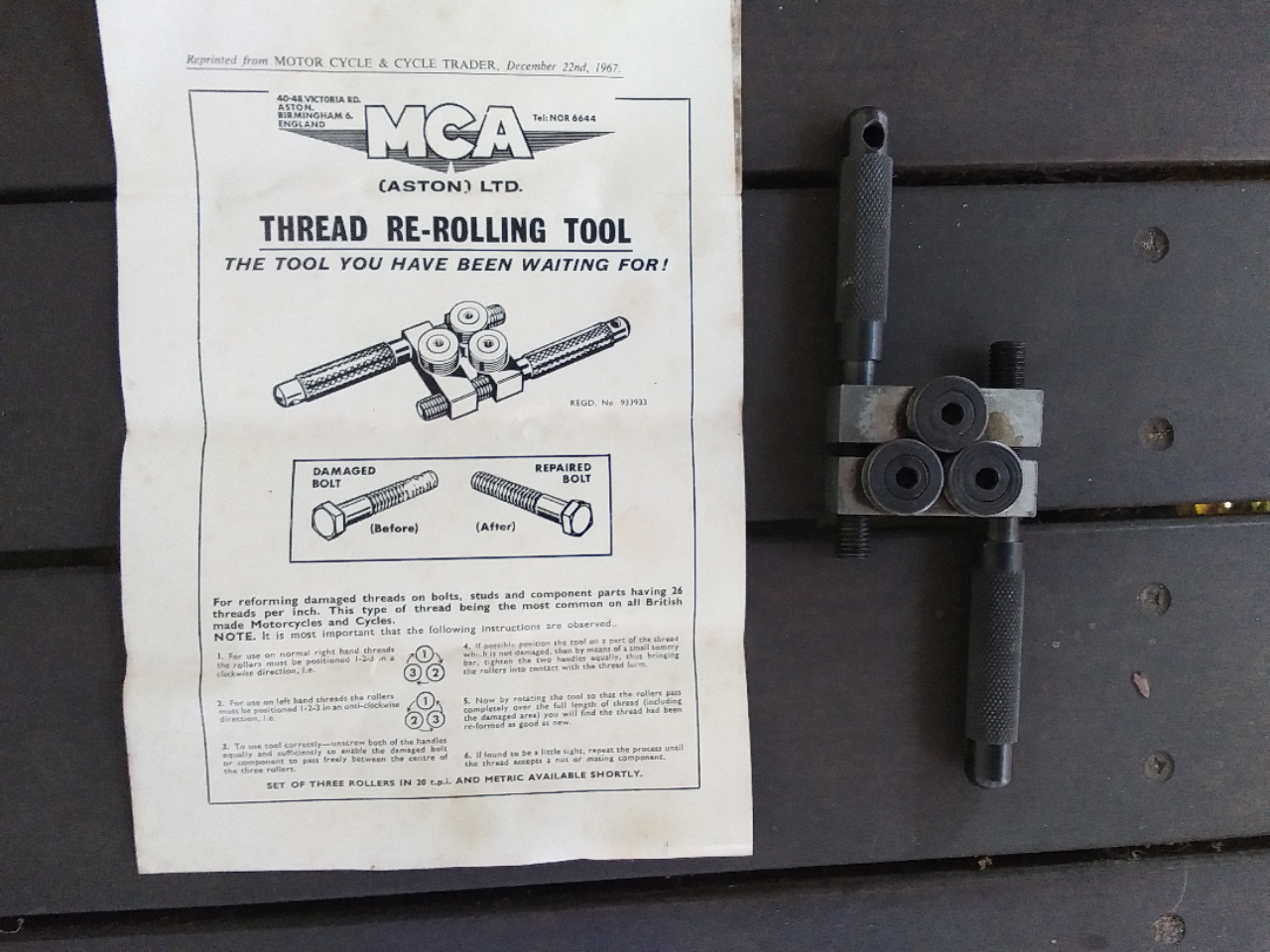Hi, can anyone lend/sell/hire me a 13/16 26tpi die nut and tap to clean up the threads on my Roadholder fork yoke and nut. I've tried Tracy Tools, who list them but they have no stock and no indication of when they will have some, I've googled but no luck. 3/4 seems to be the biggest anyone lists/stocks. It was a nightmare to strip and even worse trying to rebuild.
I'm in Darlington Co Durham and if anyone could help I'd be very grateful.
John
Thread file?
- Log in to post comments
If its the first thread or 2…
If its the first thread or 2 that's distorted on the yoke shaft then the thread file will do a better job than the die. The die will follow the distorted threads until it engages with a few of the good threads, in the time it takes for this to happen it will narrow the first couple of good threads. When you use the thread file engage with more good than bad threads so the bad become good. Once the yoke shaft is good then try the nut as it may not be too bad. A thread file will not work on an internal thread but a smaller tap but 26 tpi can be used as an internal thread file, 1/4 BSF is a good one to use, 26 tpi and small enough.
- Log in to post comments
I agree with John
The Sykes-Pickavant file mentioned by George is not as good as my decades old Metric and Unified ones. It can do the job but don't have the right feeling. It might be caused by the different angle on BSW/BSf (55 degrees) compared to the cycle thread (60 degrees).
- Log in to post comments
Failing a thread file..
.. careful use of a three-square (triangular) file can often get male threads back into usable condition. The angle is of course 60 degrees.
- Log in to post comments
13/16 26tpi die nut and tap
Thanks for the responses. I had not thought about a thread file. I have a number of friends in the steam engine/model engineering world so perhaps will be able to borrow one. The starter threads are fine, the problem arises when the nut is about 10 -15 threads on, In the vice with the threads cleaned and greased the nut runs down the thread with a little effort but once on the bike it seizes up after about 1/2". Frustrating or what ;-)
Cheers, John.
- Log in to post comments
Mine was the same very tight…
Mine was the same very tight all the way. With the forks in the vice I cleaned all the threads with the thread tool and borrowed a long ring spanner and worked the adjuster nut slowly up the thread forward and backward this gets the nut warm after that it went together easy. I had bought a new adjuster nut the old one was in bad shape but that was not the problem. It is a 1963 frame.
- Log in to post comments
Rev-counter Gearbox - dismantling tips
I have a two-into-one issue with a couple of tachometer gearboxes, both of which are faulty in different ways but with which I hope to perform the two-into-one trick in order to obtain a functioning item. As the attached photo shows, one unit is missing an end cap and one of its pinions, whilst the other one is complete but the thread for the drive cable spigot has been stripped, so I would like to swap over the two cases. The job should be easy apart from the task of popping out the boxes' circular end-caps, which are an interference fit in their casings, which are cast from Mazak or a similar alloy with a high zinc content.
I would welcome any tips from anyone who has already tackled this sort of chore successfully.
Ian.
(North-East Yorkshire)
- Log in to post comments
Ian, you need to start a new…
Ian, you need to start a new full topic, your current post will only be seen by cycle thread enthusiasts and miss the tacho experts.
- Log in to post comments
A very handy tool.....
.......reforms 26tpi threads. Don't know where you would find one these days. 
- Log in to post comments
There is a cheaper version…
There is a cheaper version of that but it only does one size and being soft not hardened steel will not do as good a job. Take a good correct nut and cut into halves. Place the 2 halves on a good part of the shaft and then use a ring spanner to keep the 2 halves together and using the ring spanner turn the split nut so it runs over the distorted threads.
- Log in to post comments




As you wish to restore your threads, have you considered a thread file?
If you are unable to borrow one, Hitchcocks Motorcycles sell this one:
https://accessories.hitchcocksmotorcycles.com/accessory-shop/tools-chassis/14114
Says 26TPI on their page, but have seen Sykes Picavant files advertised elsewhere missing 26tpi from the sizes covered so best to check with them first. That said, Enfield are/were traditional with their singles up to now so they ought to be right.
Regards,
George.